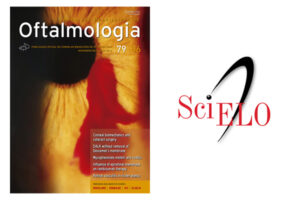Ocul Oncol Pathol. 2015 Jun;1(4):259-65. doi: 10.1159/000381155. Epub 2015 May 6.
Pablo Zoroquiain, Patrick Logan, Vasco Bravo-Filho, Natalia Vila, Samir Jabbour, Maria Eugenia Orellana, Miguel N Burnier
Affiliations
- 1Henry C. Witelson Ocular Pathology Laboratory, McGill University, Montreal, Que., Canada; Department of Pathology, School of Medicine, Pontificia Universidad Catolica de Chile, Santiago, Chile.
- 2Henry C. Witelson Ocular Pathology Laboratory, McGill University, Montreal, Que., Canada.
PMID: 27354984 PMCID: PMC4913770 DOI: 10.1159/000381155
Abstract
Objective: It was the aim of this study to determine the diagnostic accuracy of high-risk prognostic factors and morphological characteristics of retinoblastomas using digital whole slide images (WSI) generated by a scanner.
Methods: Forty-seven H&E sections of glass slides with high-risk morphological features of retinoblastoma were analyzed. Slides were scanned as WSI and reviewed. The results were compared with those obtained after reviewing the slides using a regular microscope as the gold standard. McNemar’s test (MT), the percentage of agreement (POA), and sensitivity (S) and specificity (Sp) were evaluated between WSI and conventional microscopy.
Results: There were no differences with respect to multicentricity, growth type, rosette formation, choroidal invasion, anterior chamber invasion, extraocular extension, scleral extension, optic nerve invasion, necrosis, or Azzopardi effect between WSI analysis and light microscopy (MT, p = 1.0; POA = 100%; S = 100%, and Sp = 100%). Discordance was found in 1 case where calcification could not be found using WSI (MT, p = 1.00; POA = 97.9%; S = 100%, and Sp = 97.8%).
Conclusion: To the best of our knowledge, this is the first report using digital pathology (WSI) to evaluate prognostic factors in eyes containing retinoblastomas. Using WSI, the pathologist was able to detect high-risk morphological features in retinoblastoma. To date, WSI is an important tool, in particular for ophthalmic pathologists examining enucleation and exenteration specimens.
Keywords: Ocular pathology; Retinoblastoma; Virtual slides; Whole slide images.
https://pubmed.ncbi.nlm.nih.gov/27354984/
https://karger.com/oop/article-abstract/1/4/259/246568/Diagnosing-Pathological-Prognostic-Factors-in



